Lighting the night. Chronicle of Ukrainian strikes on Russian targets
Texty.org.ua analyzed data on Ukrainian attacks on Russia from February 2022 to September 2024 (mostly at night). As the graph shows, their effectiveness has increased significantly since the beginning of this year.
Given the ban on the use of Western weapons to strike military and infrastructure facilities in Russia, Ukrainians are firing at them with weapons of their production. These are mostly drones that can cover distances of up to 1,800 kilometers (at least as of the fall of 2024).
In 2022-2023, the Armed Forces of Ukraine hit Russian military targets a total of 17 times. In January-September 2024, there were more than 30 such effective strikes.
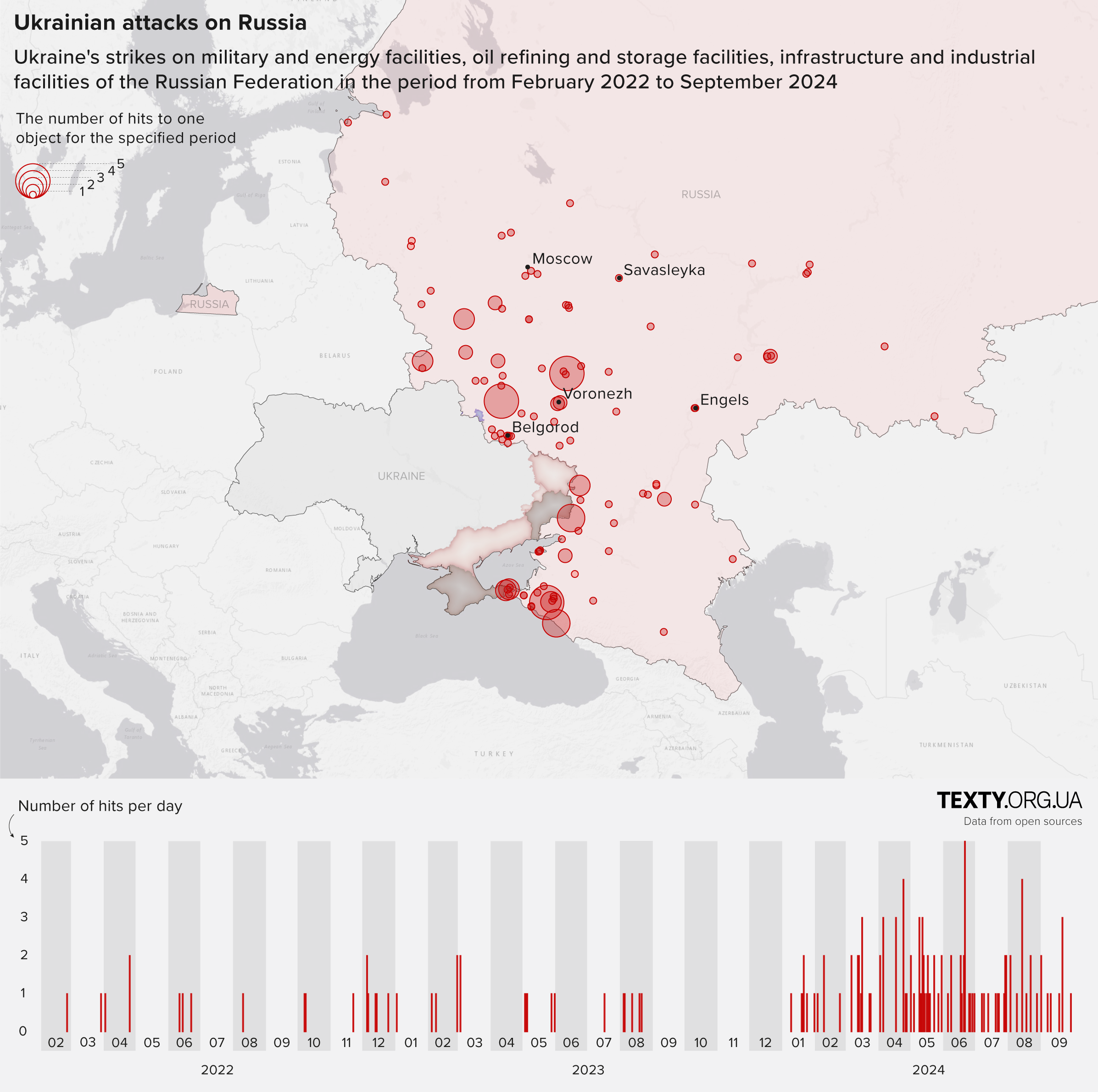
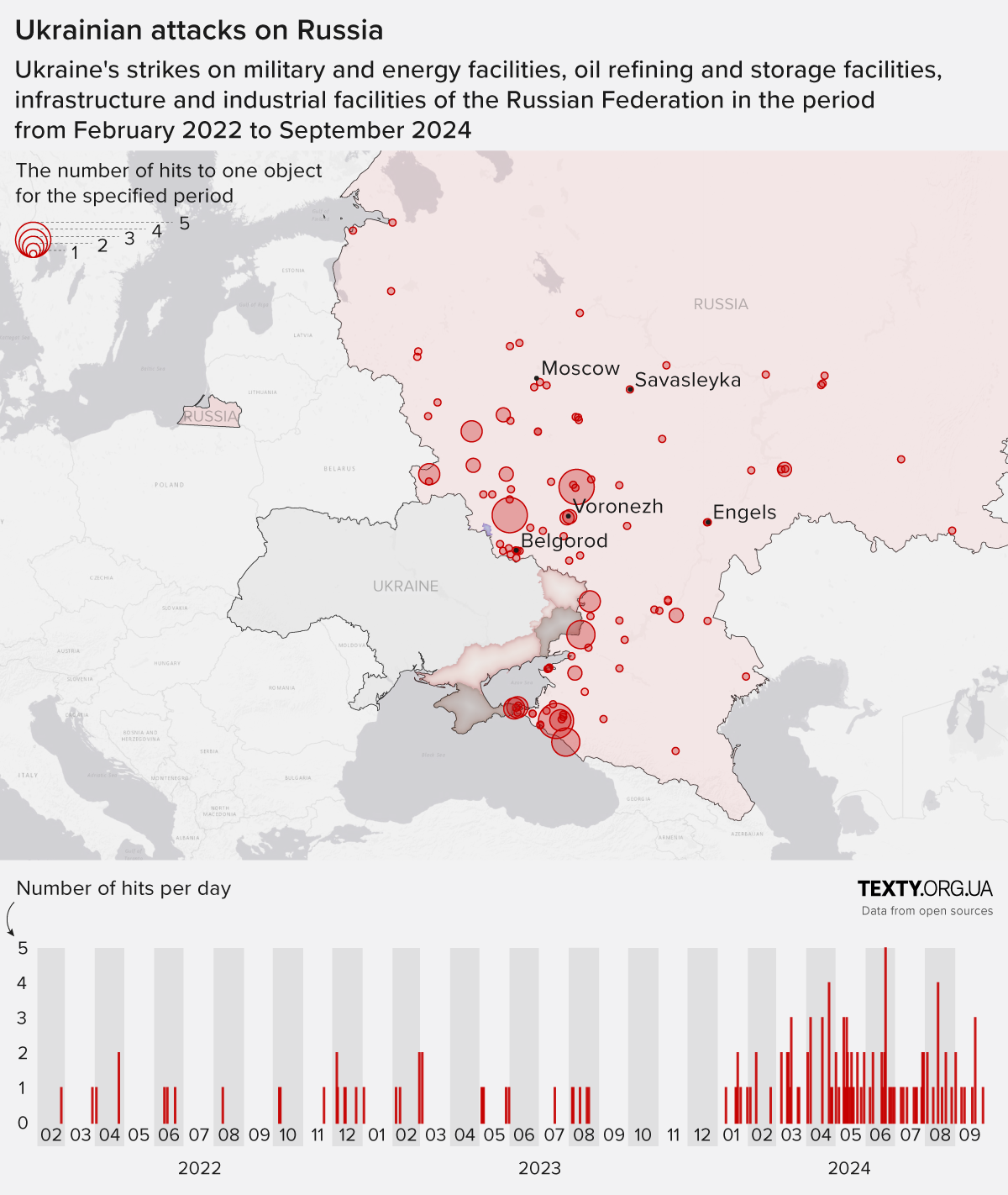
Air bases, arsenals, radar stations
Attacks on Russian military targets help us reduce the pressure on the front line and the border, which the enemy is shelling with artillery systems, drones, missiles, and anti-aircraft guns.
Damage to weapon carriers at air bases destruction of arsenals, and radar stations of the Russian Federation are also aimed at protecting Ukrainian cities from missile strikes, which the Russians are using to destroy, first of all, Ukrainian energy infrastructure and military facilities.

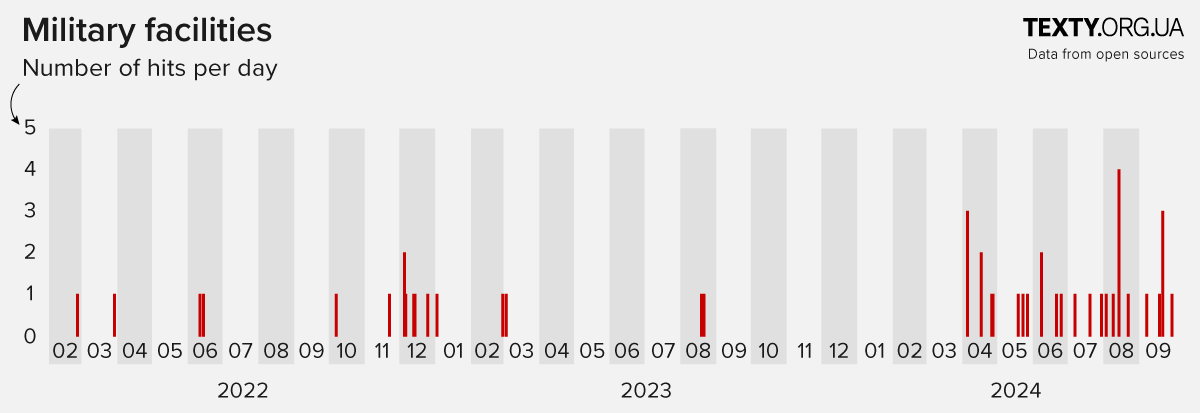
September: "fireworks" at arsenals
The biggest targets in September were the large arsenals in Tikhoretsk, Krasnodar Krai, Oktyabrskoye, Tver Region, and Kotluban, Volgograd Region. Within a week, the Russians lost thousands of tons of artillery shells and newly imported missiles from North Korea and Iran.
April: air bases and radar equipment
The best result of the shelling of air bases was on April 5, 2024, when three of them were on fire at once. Drones flew to the Khalino military airfield in Kursk Region and the Engels-2 airfield in Saratov Region, where they damaged Tu-95MS strategic bombers and also destroyed two Su-25 aircraft in Yeysk, Krasnodar Region.
In mid-April, the drones covered a distance of about 680 km, neutralizing a radio engineering hub in Mordovia. It was equipped with a 29B6 Container radar that could see air targets at a distance of up to 3000 km.
In the same month, the Voronezh-DM over-the-horizon early-warning radar station in Krasnodar Krai, which could track airborne objects at distances of up to 6,000 km horizontally and 7,000 km vertically, was attacked.
At the end of April, a Main Directorate of Intelligence of Ukraine drone flew a new record distance of 1800 km and attacked another long-range radar station, Voronezh M, located in Orsk, Orenburg Region.
For comparison, there were three successful attacks in 2023. These were attacks on the Soltsy airbases in the Novgorod region, "Shaikovka" in the Kaluga region, and an aviation school at an airfield near Krasnodar.
First strikes
Ukrainian drones targeted Russian missile carriers as early as 2022; in early December, attack drones flew to the Engels-1 airbase, where they damaged two Tu-95MS, thus reducing the next Russian missile salvo by at least 6-12 cruise missiles. On the same day, a Tu-22M3 was disabled at the Dyagilevo air base near Ryazan. The next day, a fire broke out for hours at the fuel storage facility at the Kursk-Vostochny airfield.
The very first target was the Millerovo airfield in the Rostov region, which was hit by a Ukrainian missile on the second day after the full-scale invasion. Two of Russia's newest Su-30 fighter jets were reported down, and at least one experienced Russian pilot, an officer of the 16th Army Aviation Brigade of the Russian Aerospace Forces, was killed.
One of the most daring attacks by the AFU (Armed Forces of Ukraine) was a raid on a military unit in Klintsy, Bryansk region. First, drones burned dozens of military vehicles. A few days later, a Ukrainian helicopter flew over the unit and shelled it again. Eventually, a fire broke out there, and the city lost power and water.
Oil industry
Ukrainian strikes, which also intensified significantly earlier this year, are aimed at reducing the supply of fuel to the occupiers' troops and revenues from oil exports, a key source of war funding. The attacks on refineries mostly targeted key refining equipment, without which the enterprises would be out of commission for a long time.
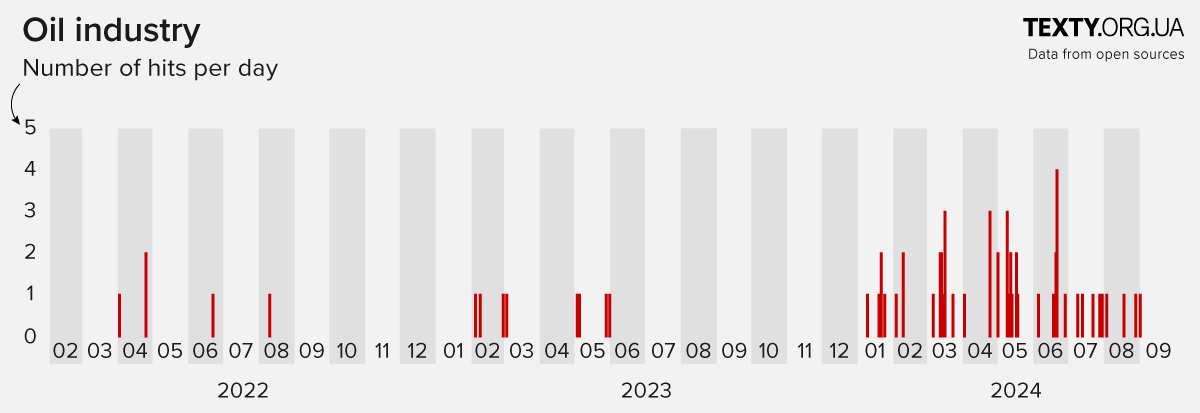

2024
In the first weeks of 2024, drones caused a large fire at the Ust-Luga oil and gas terminal near St. Petersburg. Andriy Klymenko, Head of the Black Sea Institute for Strategic Studies, showed where the attack was carried out.
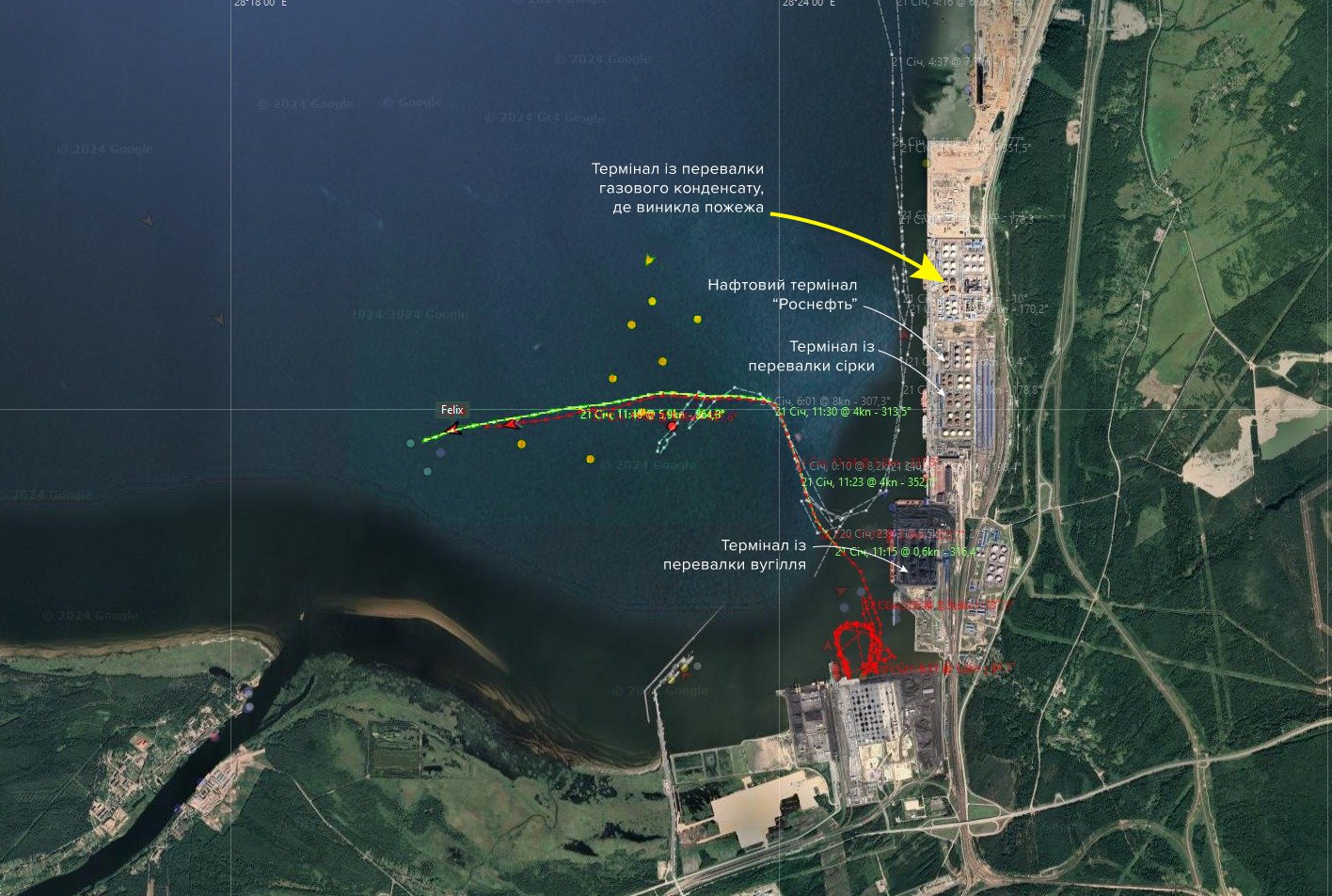
"The yellow arrow points to the gas condensate transshipment terminal where the fire broke out. Below is the "Rosneft" oil terminal. Below that is the sulfur transshipment terminal. And even lower, the black rectangle is a coal transshipment terminal. There is something to burn. Yellow marks in the sea are tankers. The red ones are tugs. The tracks show how they ran away from the berths into the sea," he explained.
On the morning of January 29, 2024, another facility more than 1,000 kilometers from the Ukrainian border, the "Slavneft-YANOS" refinery in Yaroslavl, one of the largest in Russia in terms of annual production, was hit.
In May this year, drones reached the catalytic cracking unit at the "Salavatnefteorgsintez" refinery in Bashkortostan (more than 1,500 kilometers from the Ukrainian border).
On May 30, 2024, the Armed Forces of Ukraine fired ATACMS missiles at the port of Kavkaz, from which ferries to the occupied Crimea run. An oil terminal in the port catches fire.
2023
In May 2023, several effective attacks occurred. The Taman Sea Terminal oil depot in the Krasnodar region, which is important for the transit of oil to the occupied Crimea, was on fire. Twice in one month, drones hit the Ilya refinery, burning at least three fuel tanks. A fuel oil processing unit was damaged at the neighboring Afipsk refinery.
2022
In June 2022, the largest supplier of petroleum products in southern Russia, the Novoshakhtynsky Oil Refinery, was on fire. For years, Viktor Medvedchuk and his accomplices had been receiving money from the operation of this enterprise. Then, a modified civilian drone hit the distillation column of the Novoshakhtyn refinery and stopped its operation.
Perhaps the most crucial thing in 2022 was the damage to the Druzhba pipeline near Bryansk, which was used to transport Russian oil to Europe. At the time, the economic effect of the disruption of this strategic facility was equated to the loss of the cruiser Moskva for the Black Sea Fleet.
Industry
According to open sources, Ukrainian troops began striking at Russian industry in 2024.

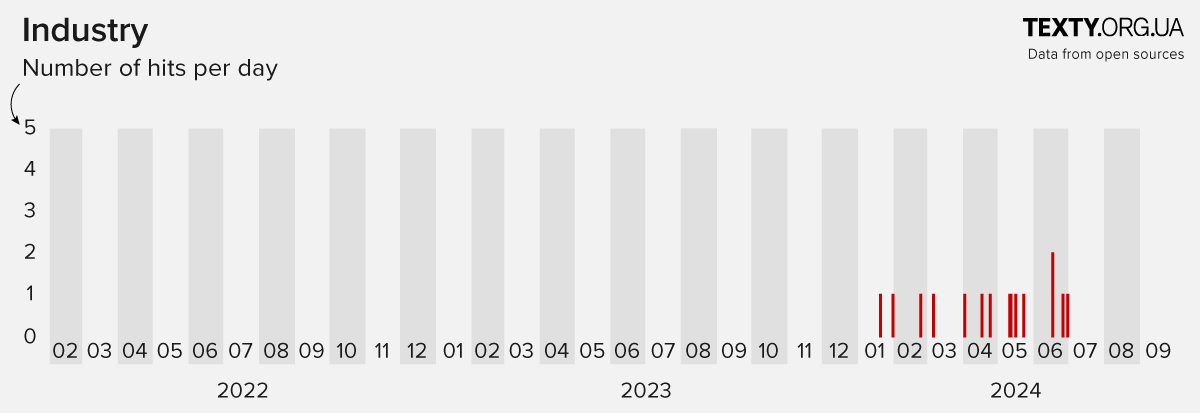
On June 26, UAVs attacked the Redkin Research Plant near Tver, which produces aviation fuel, chemicals, and additives for the military industry. Four drones crashed into a pipeline, the roof, and the building of one of the plant's workshops, and its employees were hastily evacuated.
A large-scale attack on the military-industrial complex in Nizhnekamsk in May forced the Russians to evacuate workers from a number of enterprises, including Nizhnekamsk CHP, Nizhnekamskugol, TAIF-NK, Orgsintez, Nizhnekamskshiny, Nizhnekamskneftekhim, and Taneko.
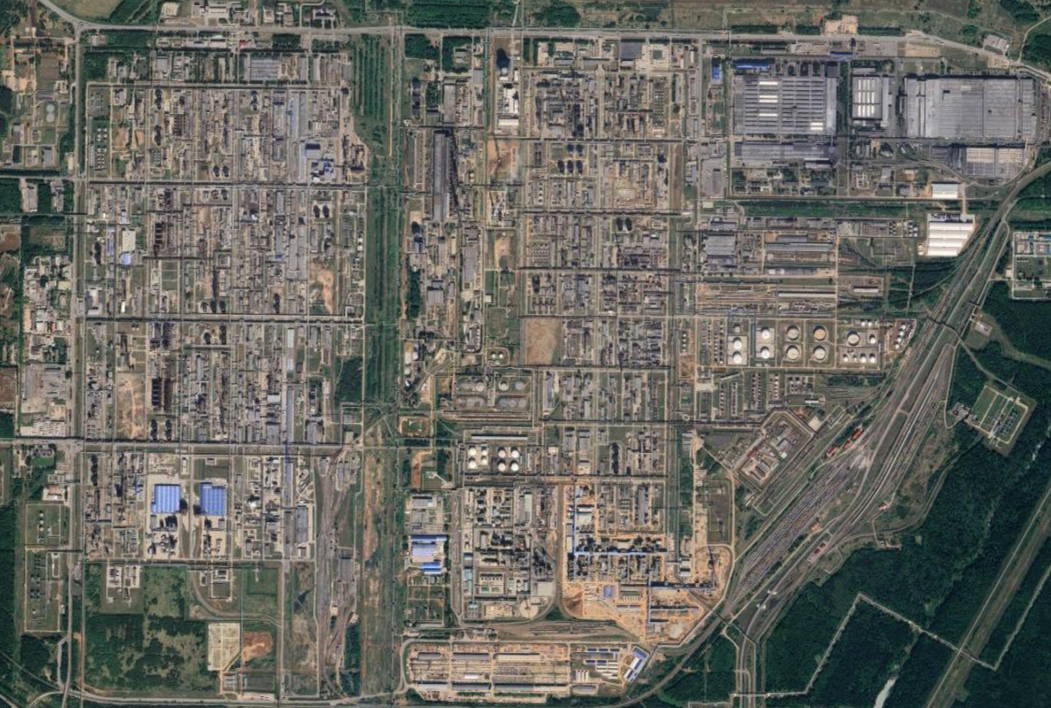
In April, UAVs flew to the Alabuga/Yelabuga special economic zone in Tatarstan, more than 1,000 kilometers from the border with Ukraine. There, the drones destroyed several rooms of a workshop assembling Russian Shahed drones.
The same month, drones arrived at the Gorbunov Aircraft Plant in Tatarstan. This defense enterprise assembles and repairs the Tu-22M and Tu-160M aircraft that Russians use to attack Ukraine. The Tu-22M3s carry Soviet supersonic anti-ship missiles, and the X-22 is designed to destroy aircraft carriers.
These missiles have hit, among other things, a shopping center in Kremenchuk and a high-rise building in Dnipro. The warhead of these missiles weighs 950 kg and can deviate from the target by up to 600 meters or more. Only the Patriot and SAMP/T systems are capable of shooting down the X-22, apparently.
At the end of February, a Ukrainian drone was "intercepted" by the Novolipetsk Metallurgical Plant. At the time, the governor of the Lipetsk region, Igor Artamonov, claimed that the fire was allegedly caused by a drone "intercepted" by Russian air defense. Locals later reported a fire on the territory of the coke plant and the failure of the primary cooling unit for untreated coke oven gas. Thanks to this strike, the Ukrainian Armed Forces managed to shut down a large production facility that worked for the Russian military-industrial complex for a long time.
Raw materials from the Novolipetsk Metallurgical Plant are used to make Russian missiles, artillery, and drones.
On January 20, the drones arrived at the Shcheglovsky Val defense plant near Tula, where Russians assemble, among other things, Pantsyr-1S anti-aircraft systems. This is one of the largest Russian enterprises that develops guided weapons for the ground forces, air defense systems, rapid-fire guns, and small arms.
Energy facilities
As in the case of Russian industry, Ukrainian drones began flying over the occupiers' energy facilities in 2024.
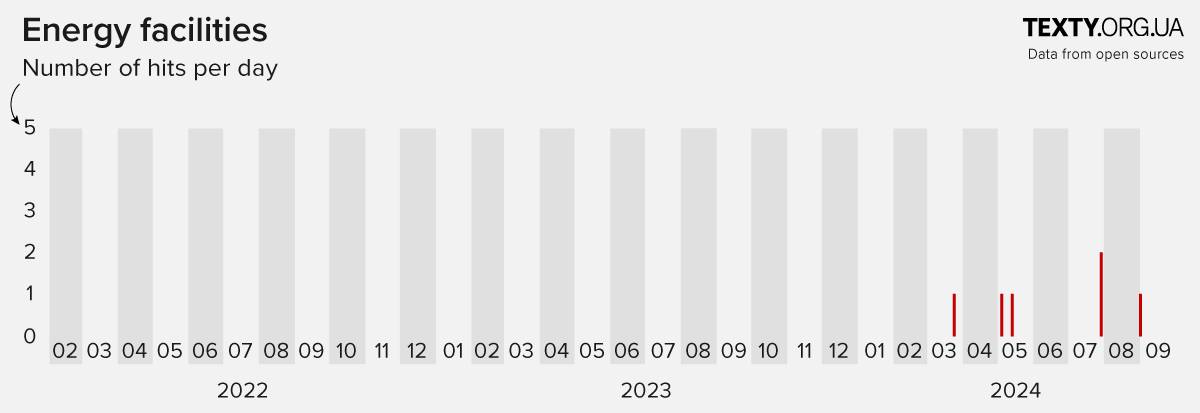

On the night of September 1, after a drone attack, one of the largest power plants in the central part of Russia, the Konakovo power plant in the Tver region, caught fire. According to objective monitoring, at least three UAVs hit it.
On May 13, Ukrainian drones hit the 500 kV Eletskaya power substation in Lipetsk Oblast, which feeds the railroad and the Stanovaya oil pumping station, and also provides energy transit between the Lipetsk, Orel, and Bryansk grids.
On the night of March 25, a UAV hit the transformers of the Novocherkassk power plant in Rostov Oblast, the second-largest power plant in the country after the Rostov NPP. Due to explosions and fires, the Russians shut down two power units. The 330 kV Tikhoretskaya and Rostovskaya high-voltage lines were also automatically shut down.
Infrastructure
The most recent incident was a drone strike on Zhukovsky Airport near Moscow on September 10, 2024. A fire broke out there. "Zhukovsky, Domodedovo, and Vnukovo airports were closed for arrivals and departures. According to the mayor of Moscow, a fire broke out in several buildings due to "repelling an attack"."

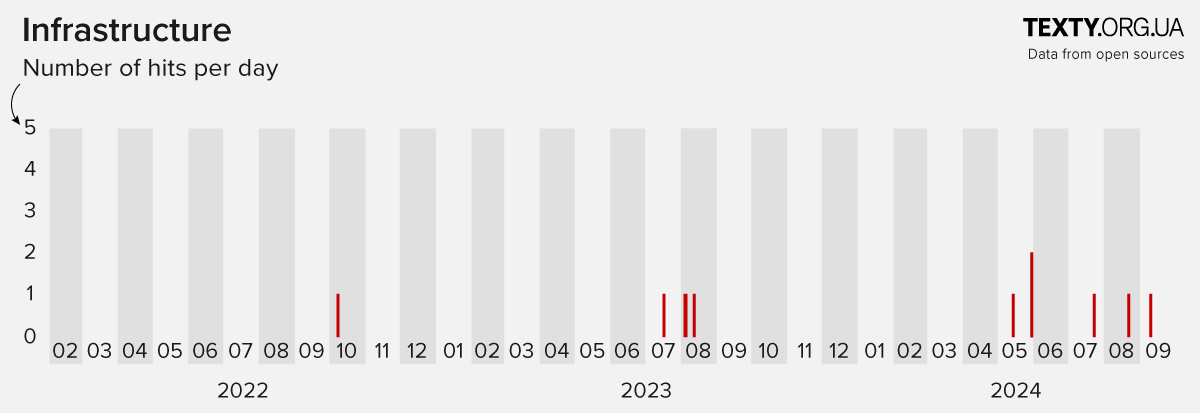
On May 30, 2024, missiles hit the Kerch ferry crossing, damaging two ferries for rail and road transportation. One of them ran aground and blocked the ferry.
On the night of August 5, 2023, SBU surface drones blew up a large SIG tanker with 450 kg of TNT. As a result, one of the largest Russian tankers with a capacity of almost 5,000 tons sank near the shores of the Kerch Strait. At the time of the attack by surface drones, the SIG was heavily loaded with fuel.
On July 17, 2023, Ukrainian surface drones hit the roadside of the Crimean bridge. The occupation authorities immediately blocked all routes of communication between Crimea and Russia. Eight Russian trains heading to Crimea were late, and the Simferopol-Moscow train, which had been standing in front of the Kerch Bridge for five hours, was turned back toward Krasnodar region, Russian media reported.
At about six in the morning on October 8, 2022, an explosion occurred on the Kerch Bridge. According to the Russians, it was Ukrainian saboteurs who blew up a truck filled with explosives. Seven fuel tanks on the railroad side were on fire, and two spans of the roadway collapsed. The occupiers were forced to block the traffic through the sea strait and tried to resuscitate it with the help of a ferry.
According to our estimates, in January-September 2024 alone, Ukraine struck five times more critical Russian facilities than in the previous two years combined. Almost all of the attacks were carried out by UAVs. The exception is missile strikes on Russian infrastructure near the occupied Crimean peninsula.
This article was originally written in Ukrainian. It has been translated into English using AI tools such as DeepL, ChatGPT, and Grammarly. If you encounter an error that requires immediate attention, please inform us via Facebook, Twitter, or Instagram. Your understanding and support are appreciated.

